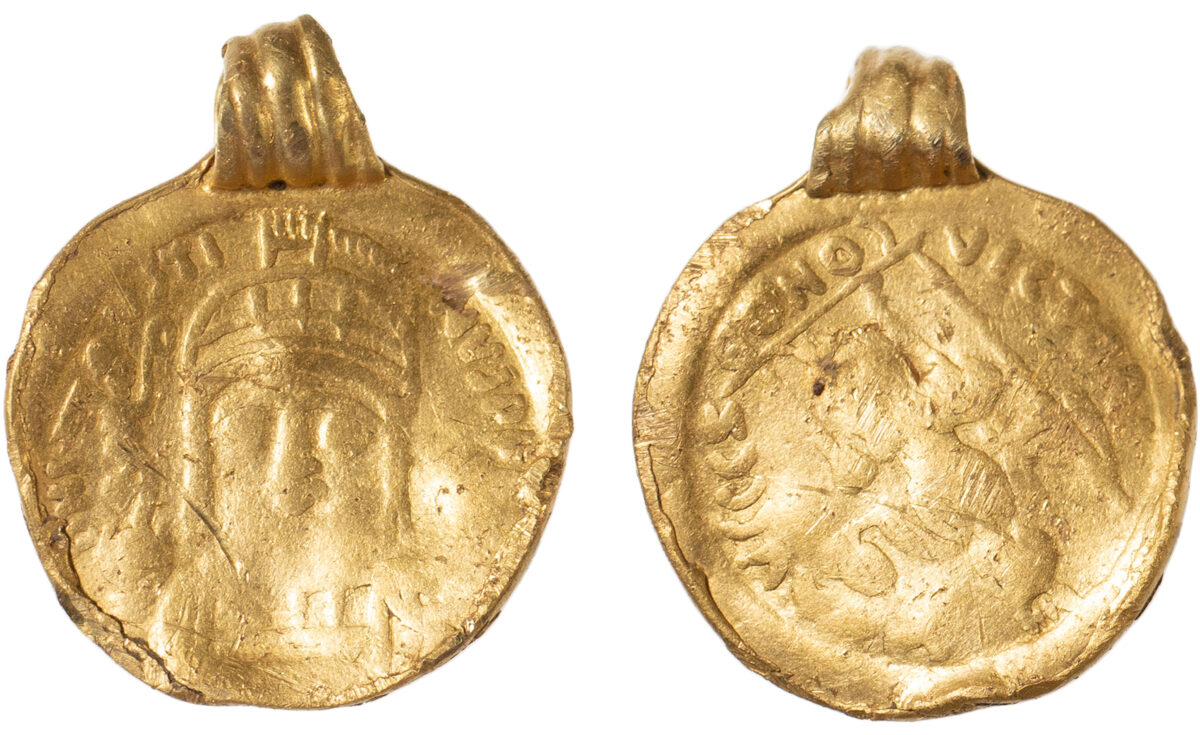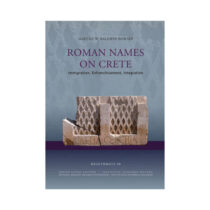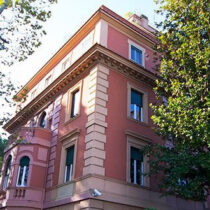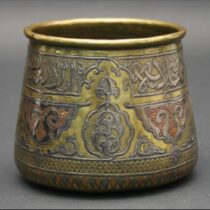A gold pendant featuring a pseudo-Byzantine solidus coin, recently discovered by a metal detectorist in Thaxted, Essex, is offering new insights into the existence of a wealthy elite in early medieval Essex.
The gold coin is a copy of a known issue from the reign of Emperor Justin II (565–578 AD). The front shows the emperor, helmeted and armored, facing forward. He holds a figure of Victory standing on a globe in his right hand and a shield in his left. The inscription reads DN IVSTI-NVS PP AVG, which translates to “Dominus Noster Justinus Perpetuus Augustus.” On the reverse, a personification of Constantinople is depicted seated, holding a scepter and a cross on a globe, with the inscription VICTORI-A AVGGG, meaning “Victory of the Emperors,” and the mintmark CONOB, indicating it was struck at the Constantinople mint.
Such rough imitations of Roman and Byzantine gold coins were minted by early medieval European kingdoms to emulate the imperial prestige associated with gold currency, which had largely vanished from circulation in the Germanic regions. These pseudo-imperial solidi have been found in Britain—produced by Anglo-Saxon, Frankish, Lombardic, Burgundian, Visigothic, and Ostrogothic rulers—more often as pendants than as untouched coins.
The pendant’s suspension loop, soldered above the center of the emperor’s head, suggests it was designed to be worn with the obverse showing. The reverse is offset at the 5 o’clock position, not at the top, confirming that it faced inward. The considerable wear on the reverse side supports this, indicating it rested against the skin. The loop itself features five longitudinal ribs, a style characteristic of late 6th- to early 7th-century pendants.
It was one of a number of recent finds which were “flipping what we thought we knew about Essex at this time on its head,” historian Lori Rogerson said.
“Because in this period we have no written record for the county, it really is in the dark for people working in archaeology and heritage – so this find literally shines a light on that time,” the county finds liaison officer added.
She noted that such objects from the 6th and 7th centuries are rarely found in Essex, in contrast to counties like Kent, Suffolk, or Norfolk.
“The gold is really high quality and it is an elite object, but we don’t get these high status objects found through commercial archaeology, so if this hadn’t been found, we’d have had no idea there were these elite groups of people in this area at this time,” she explained.
The pendant has been officially declared treasure and will be evaluated by a valuation committee. A local museum will have the chance to purchase it at the assessed price. Saffron Walden Museum has expressed interest in acquiring the piece.





